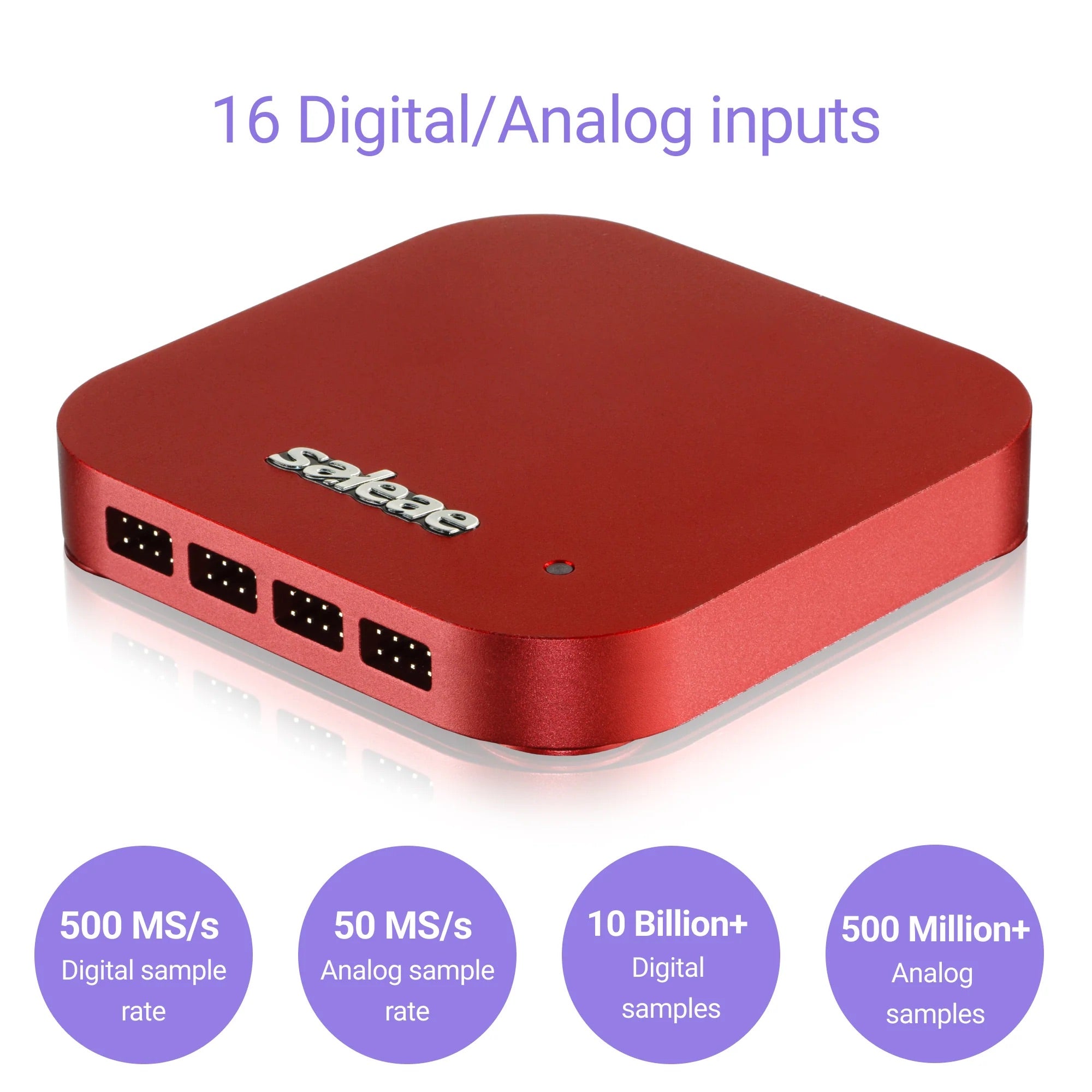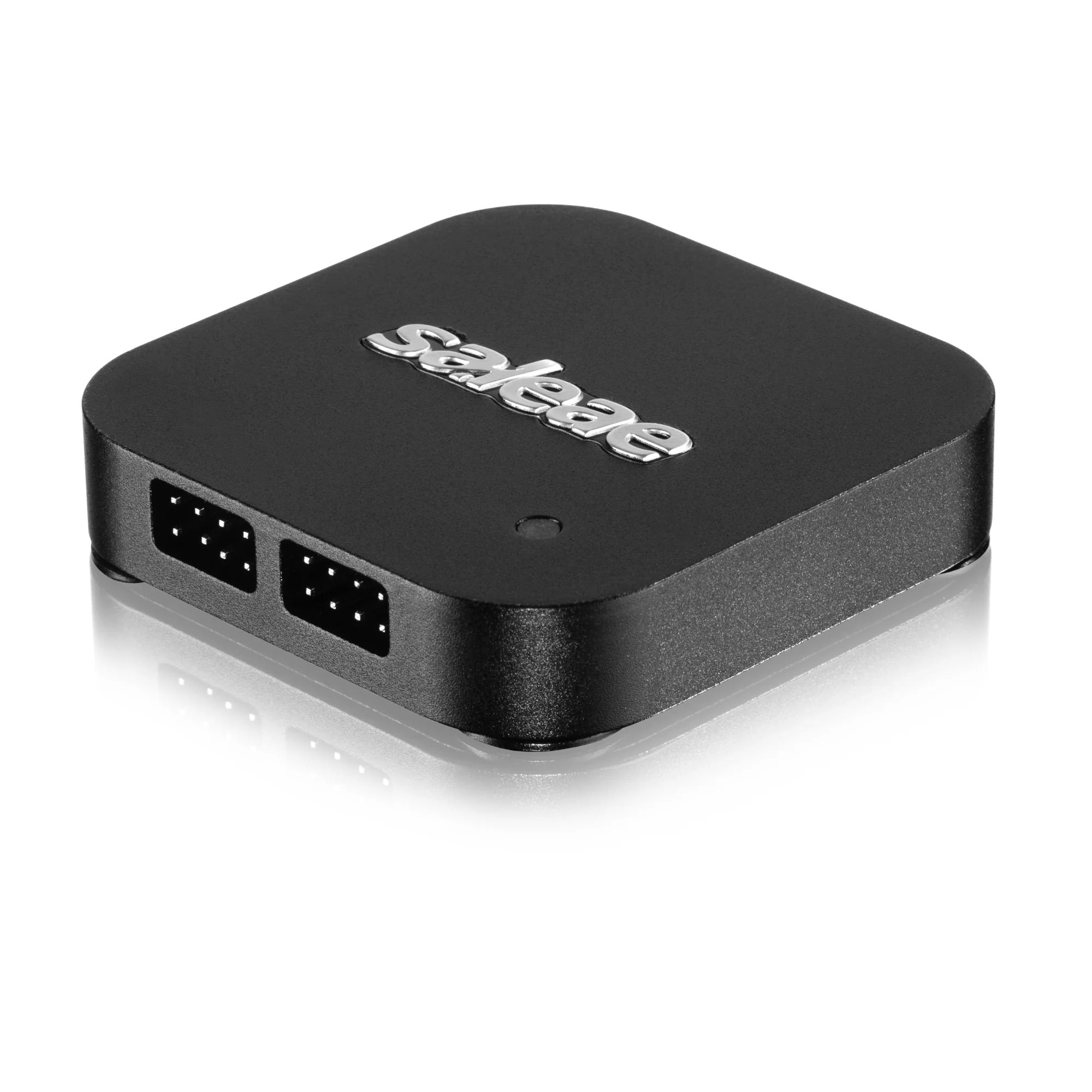What a logic analyzer does
With a logic analyzer, you can simultaneously record several signals from electronic circuits that are located in a device as an embedded system or are part of a production system, for example.
Using test leads and test clips, you connect the logic analyzer to the respective inputs of the device under test; the measuring devices offer at least eight channels for this. The device then records the signals and displays them visually; for trigger measurements, the logic analyzer triggers the desired digital events beforehand.
Logic analyzers display the results of the recording in different ways and there are various functions:
- Time analysis (asynchronous measurement)
- Status analysis (synchronous measurement)
- Protocol analysis with insight into the system level (protocols such as SPI, UART, etc.)
Wide range of applications for logic analyzers
Logic analyzers are particularly useful for hardware development, software testing and targeted troubleshooting.
In practice, these measuring devices have proven themselves in numerous areas of application. For example, users use logic analyzers to check the functionality of an Arduino microcontroller.
Important areas of application are
- Function check
- Firmware troubleshooting
- Reverse engineering
- Protocol decoding
Buy brand quality logic analyzers and accessories
Here in the shop you will find high-quality logic analyzers from leading manufacturers. The range includes measuring devices from the US brand Saleae, which are also used by high-tech companies such as Apple, SpaceX and Google. The logic analyzers from Saleae impress with their many advantages:
- Precise measurement, perfect visualisation
- Compact devices with USB interface for mobile use
- Suitable for digital and analogue signals
- High maximum sampling rate (from 100 MS/s for digital signals)
- Powerful software with extras such as glitch filters
When you order a logic analyzer from Saleae, you will receive a comprehensive package with all the necessary accessories such as test cables, test clips and USB cables. You can also purchase these accessories separately. For example, you can purchase colour-coded test power sets (wire harness) from Saleae and also take a look at the extensive range from the manufacturer Sensepeek.
The right logic analyzer for your purpose
The technical features of a logic analyzer largely determine how precisely, comprehensively and flexibly digital and analogue signals can be recorded and interpreted. The sampling rate determines the maximum signal frequency that can still be recorded correctly, and the number of inputs determines how many signal sources can be monitored simultaneously. A high memory depth enables the recording of longer signal sequences in order to track even complex processes or sporadically occurring error states.
| Model | Number of digital/analogue inputs | Maximum digital sampling rate (MS/s)* | Maximum analogue sampling rate (MS/s)* | Maximum number of digital samples | Maximum number of analogue samples |
| Saleae Logic 8 | 8 digital/analogue inputs | 100 MS/s | 10 MS/s | over 10 billion (≈10 billion) | over 500 million (≈500 million) |
| Saleae Logic Pro 8 | 8 digital/analogue inputs | 500 MS/s | 50 MS/s | over 10 billion (≈10 billion) | over 500 million (≈500 million) |
| Saleae Logic Pro 16 | 16 digital/analogue inputs | 500 MS/s | 50 MS/s | over 10 billion (≈10 billion) | over 500 million (≈500 million) |
* MS/s = Megasamples per second
Saleae Logic 8: Sufficient for medium requirements
- Analysing I²C or SPI signals at moderate clock frequencies
- Identification of timing problems in simple control systems
- Monitoring of digital signal sequences at medium speed
The Saleae Logic 8 has eight inputs and can therefore record up to eight signals simultaneously. Thanks to its moderate digital sampling rate, it is designed for medium signal speedsand can therefore reliably cover typical applications in the field of digital circuits. The analogue sampling rate is also designed more for basic applications, but is sufficient to display basic signal curves. The large number of possible digital and analogue samples also ensures long-term recording so that events extending over time can be easily analyzed.
Saleae Logic Pro 8: Greater precision for more demanding scenarios
- Analysing signals at higher SPI bus clock rates or fast UART connections
- Detailed characterisation of analogue oscillations or transient phenomena
- Debugging of systems in which multiple components such as microcontrollers, sensor arrays and external memories work together
With the Saleae Logic Pro 8, the significantly increased sampling rate in both the digital and analogue range ensures a finer temporal resolution. This means that even rapidly changing signals and higher frequencies can be captured, which go beyond the capabilities of the standard model. Although the eight input channels remain unchanged, the improved performance values enable more demanding measurement scenarios in which more exact detailed analyzes, signal progressions and more precise evaluations are required. The high memory depth ensures longer-lasting measurements without loss of information.
Saleae Logic Pro 16: More flexibility for complex projects
- Analysing parallel buses with many data and address lines
- Multi-signal monitoring in highly integrated systems
- Long-term recordings in critical applications
With its 16 inputs and high sampling rates, the Saleae Logic Pro 16 is particularly versatile. Particularly complex circuits with numerous data, address and control signals can be comprehensively recorded here. It records many signals simultaneously and makes it possible to analyze the interaction of different components in detail. Complex error patterns or interactions can thus be better understood. Thanks to the enormous memory depth, detailed measurement data can be collected even over long periods of time and then thoroughly analyzed.

























